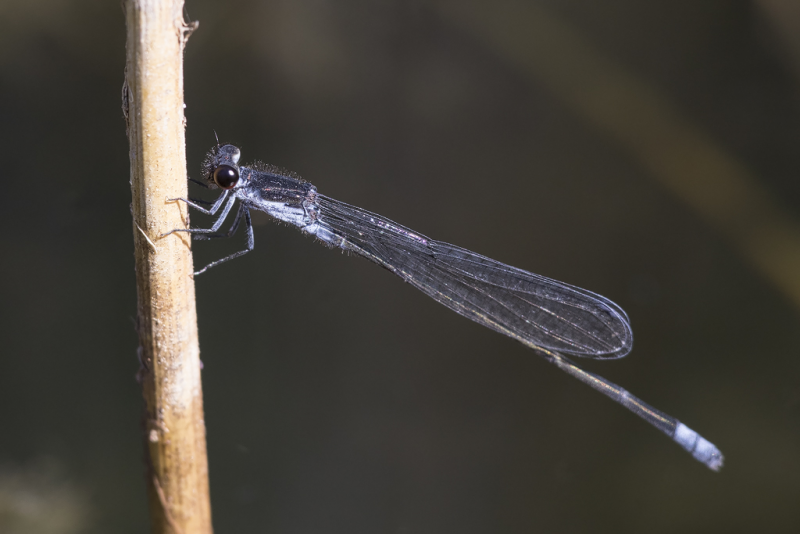Cover photo by Desire Darling.
Find the Black Sprite in the FBIS database (Freshwater Biodiversity Information System) here.
Family Coenagrionidae
Identification
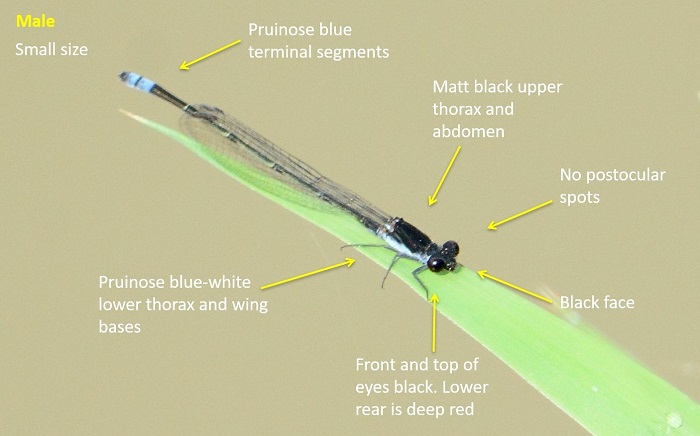
Mkuze River, KwaZulu-Natal
Photo by Ryan Tippett
Small size
Length up to 39mm; Wingspan attains 51mm.
Male Black Sprites are most similar to the dark form Swarthy Sprite (Pseudagrion hamoni). Pseudagrion commoniae can be told by its eyes, which are black above and in front, with dark red below. In Pseudagrion hamoni, the eyes are red in front.
Females are easily confused with those of several other sprite species. They are best identified by their association with the males.
Click here for more details on identification.
Habitat
The Black Sprite inhabits the grass and reed-lined verges of streams and rivers, mainly in hot savanna areas. It prefers slow-moving stretches and pools, often where the water is fairly turbid. It is occasionally also found at dams and ponds. The Black Sprite is largely restricted to the Savanna Biome.
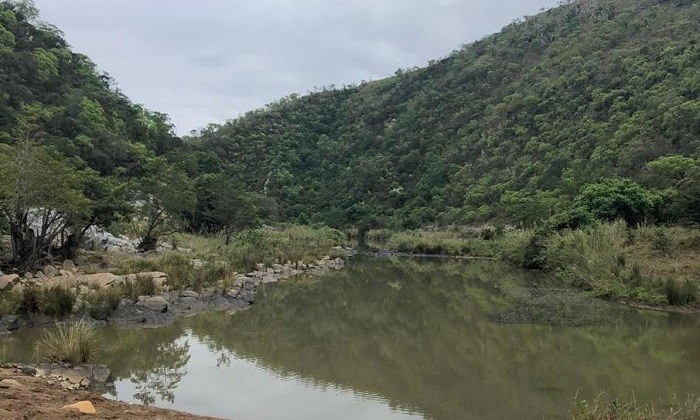
Mkuze River, KwaZulu-Natal
Photo by Ryan Tiuppett
Behaviour
The Black Sprite perches near the water among reeds and grass and is usually quite reluctant to fly. The Black Sprite feeds on small flying insects.
Most active from January to May but recorded year round in warmer areas. See Phenology below.
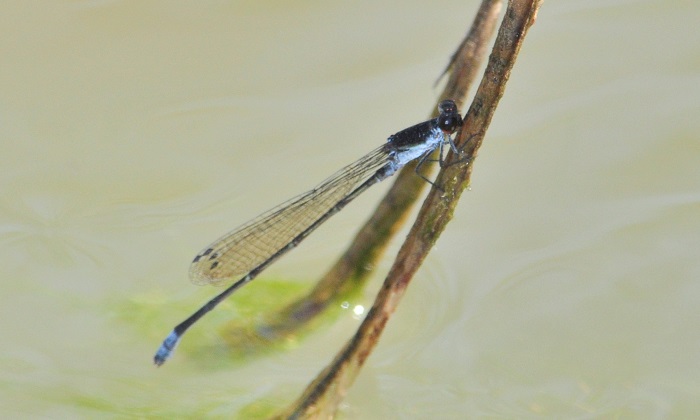
Amakhosi Game Reserve, KwaZulu-Natal
Photo by Ryan Tippett
Status and Conservation
The Black Sprite is a common species in South Africa. It is listed as of Least Concern in the IUCN Red List of Threatened Species. The Black Sprite often frequents man-made and degraded habitats, especially those with turbid water.
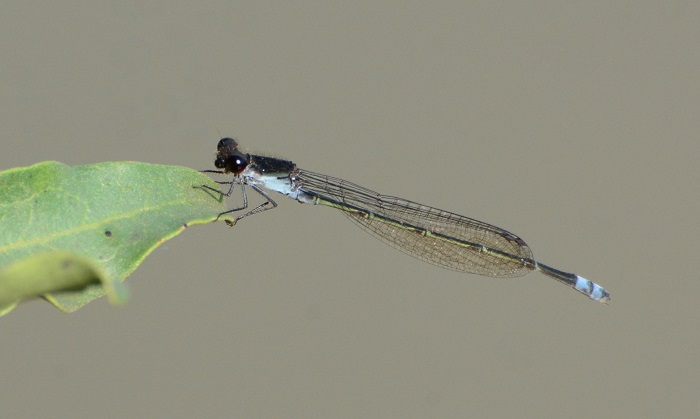
Mkuze River, KwaZulu-Natal
Photo by Ryan Tippett
Distribution
Pseudagrion commoniae is found in Southern and East Africa, ranging from Ethiopia in the North to South Africa. In South Africa it is restricted to the savanna regions of the north-east.
Below is a map showing the distribution of records for Black Sprite in the OdonataMAP database as at February 2020.
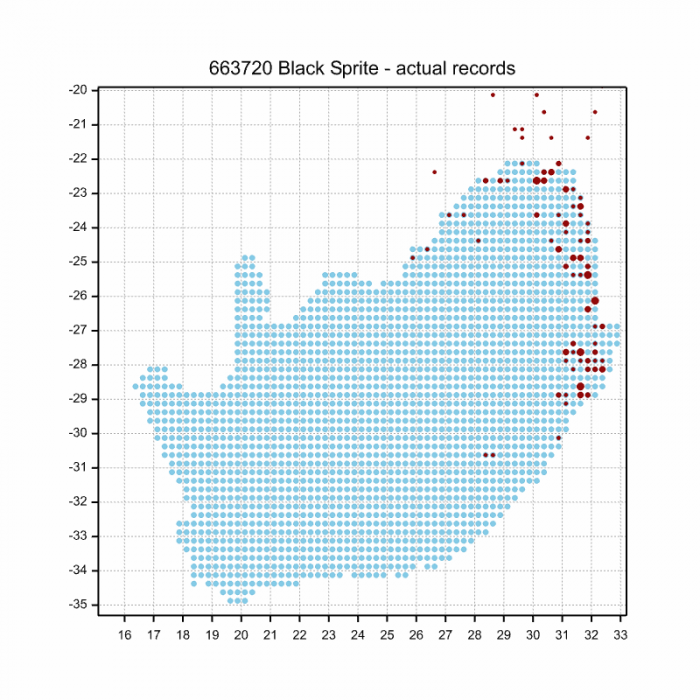
Below is a map showing the distribution of records for Black Sprite in the OdonataMAP database as of December 2024.
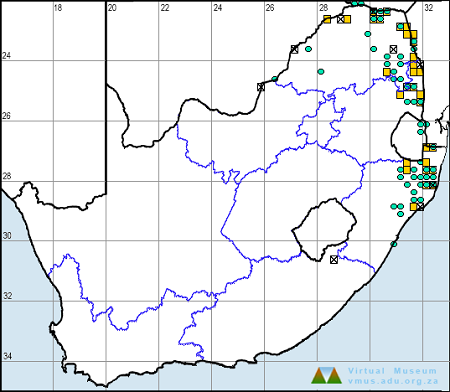
The next map below is an imputed map, produced by an interpolation algorithm, which attempts to generate a full distribution map from the partial information in the map above. This map will be improved by the submission of records to the OdonataMAP section of the Virtual Museum.
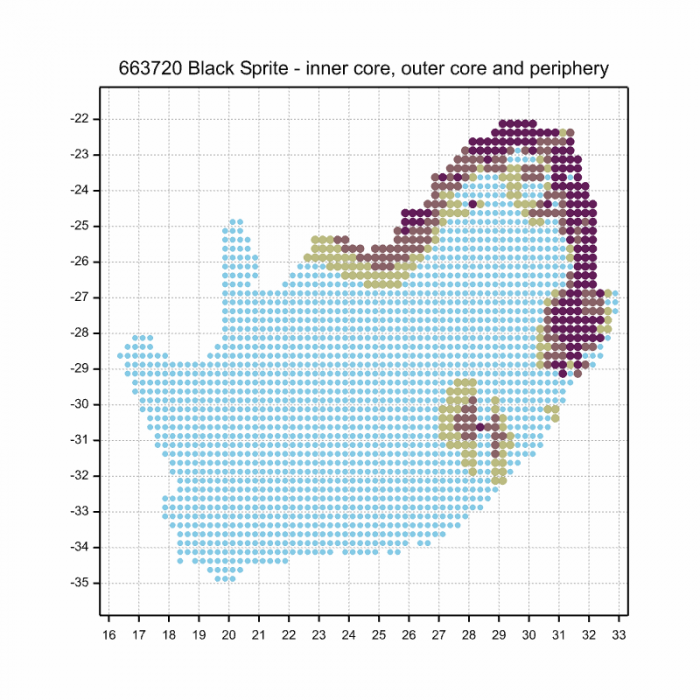
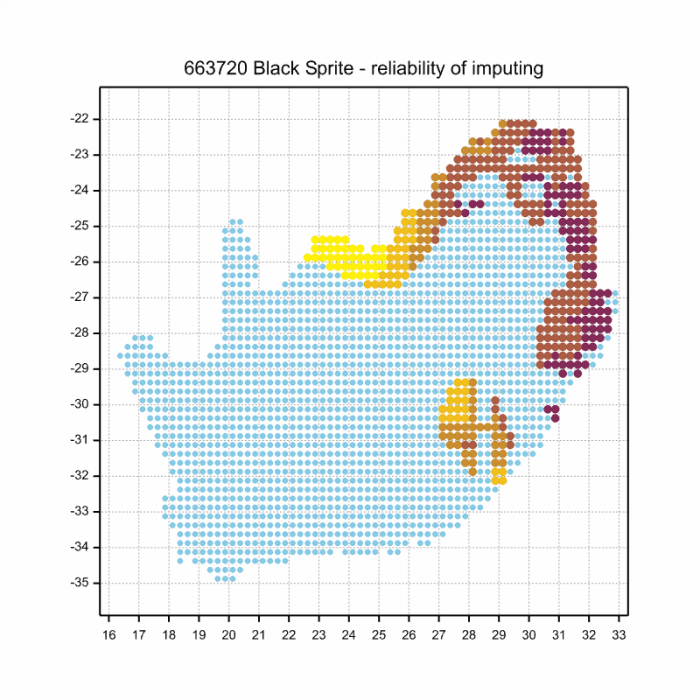
Ultimately, we will produce a series of maps for all the odonata species in the region. The current algorithm is a new algorithm. The objective is mainly to produce “smoothed” maps that could go into a field guide for odonata. This basic version of the algorithm (as mapped above) does not make use of “explanatory variables” (e.g. altitude, terrain roughness, presence of freshwater — we will be producing maps that take these variables into account soon). Currently, it only makes use of the OdonataMAP records for the species being mapped, as well as all the other records of all other species. The basic maps are “optimistic” and will generally show ranges to be larger than what they probably are.
These maps use the data in the OdonataMAP section of the Virtual Museum, and also the database assembled by the previous JRS funded project, which was led by Professor Michael Samways and Dr KD Dijkstra.
Phenology
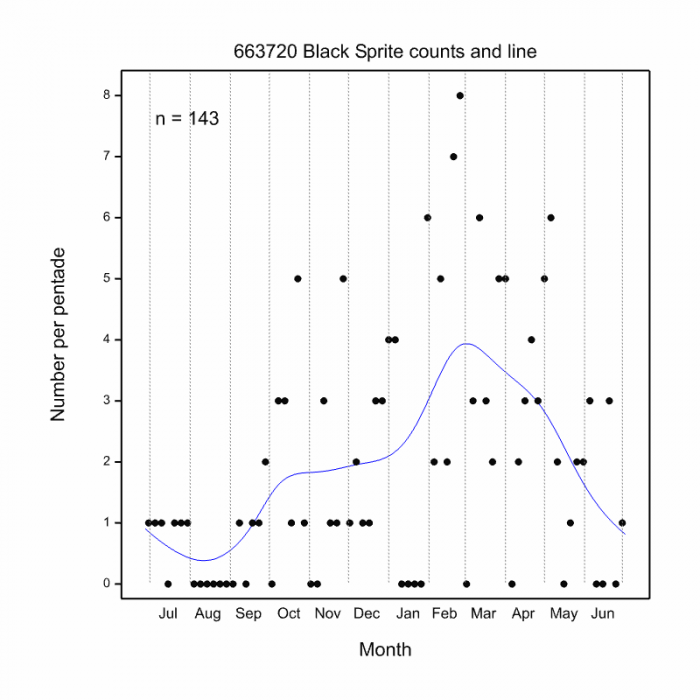
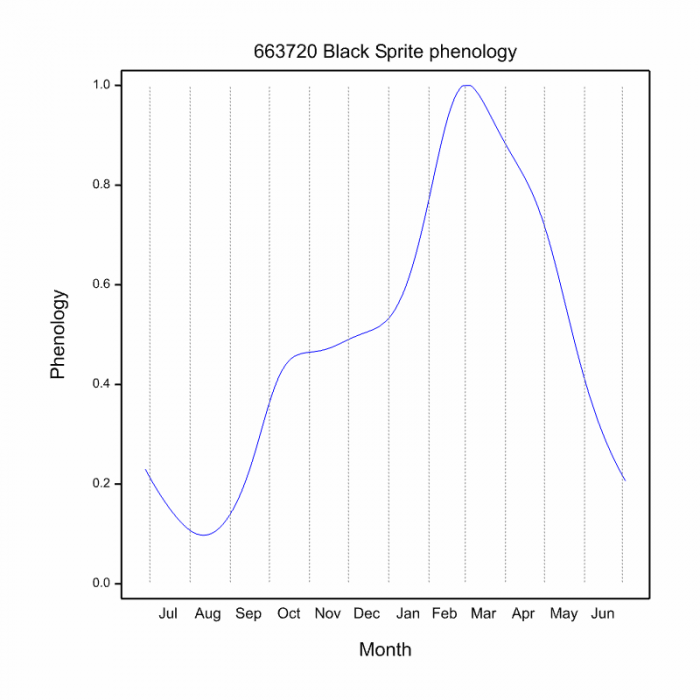
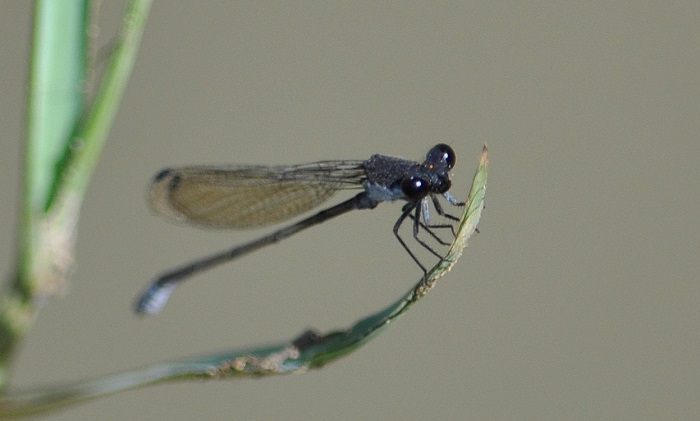
Mkuze River, KwaZulu-Natal
Photo by Ryan Tippett
Further Resources
The use of photographs by John Wilkinson and Rowan Poortier is acknowledged.
Black Sprite Pseudagrion commoniae Pinhey, 1950
Other common names: Swartgesie (Afrikaans).
Recommended citation format: Loftie-Eaton M; Navarro R; Tippett RM; Underhill L. 2025. Black Sprite Pseudagrion commoniae. Biodiversity and Development Institute. Available online at https://thebdi.org/2020/05/21/black-sprite-pseudagrion-commoniae/
References: Tarboton, M; Tarboton, W. (2019). A Guide to the Dragonflies & Damselflies of South Africa. Struik Nature.
Samways, MJ. (2008). Dragonflies and Damselflies of South Africa. Pensoft
Samways, MJ. (2016). Manual of Freshwater Assessment for South Africa: Dragonfly Biotic Index. Suricata 2. South African National Biodiversity Institute, Pretoria
Martens, A; Suhling, F. (2007). Dragonflies and Damselflies of Namibia. Gamsberg Macmillan.

